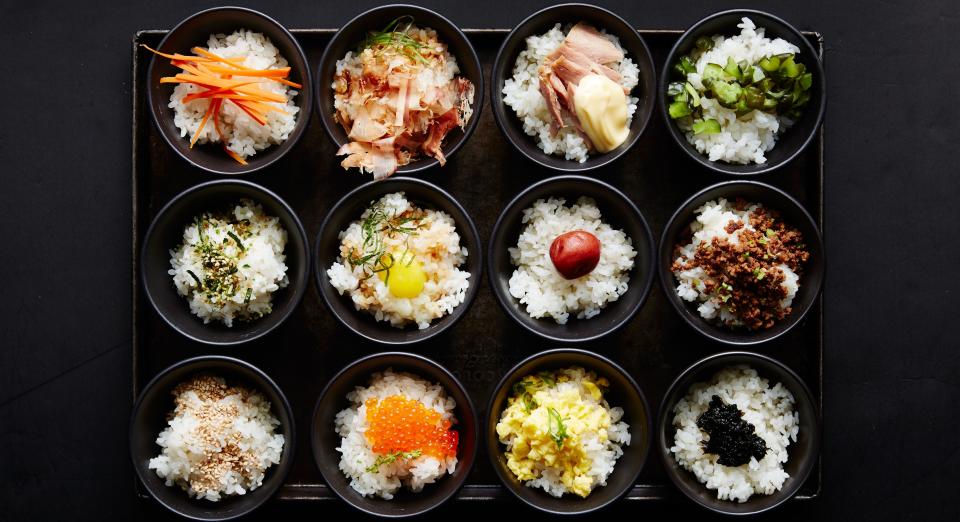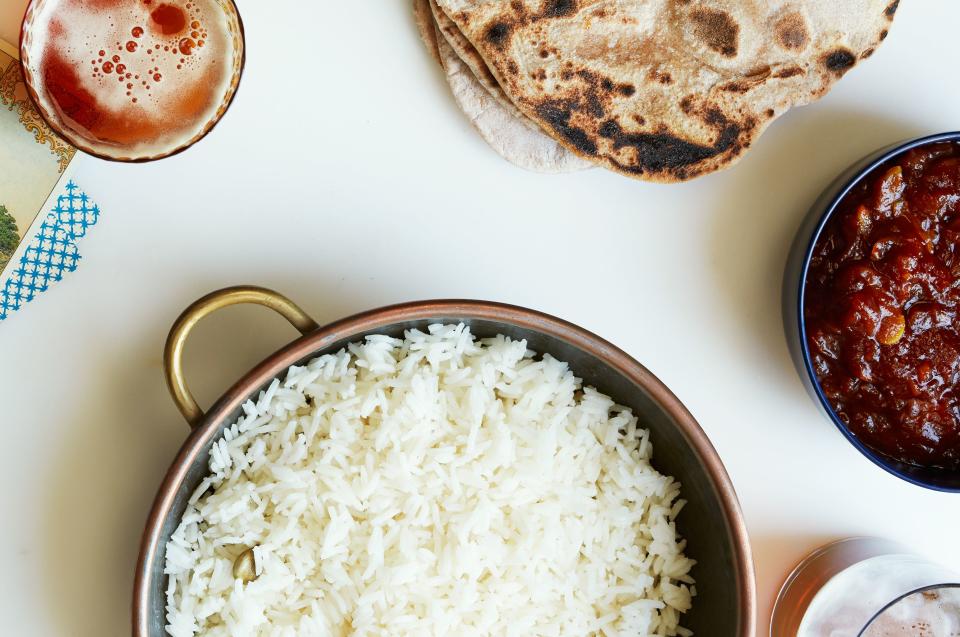How to Make White Rice Perfectly, Every Single Time
It's OK: We all make mistakes. But you know what's less OK? Not learning from them. Welcome to Effed It Up, a semi-regular column where we do just that. Up this week: how to make white rice that is perfect and delicious, not gross and gummy. Let's get to it.
Promise me you will never make nor eat wallpaper spackle rice again. You know, when rice gets all gummy and porridge-like. The stuff that is so far from a real pot of perfectly steamed grains that it doesn't deserve to be called rice. When rice turns out gummy or clumps together, it's generally a sign that there was a lot of extra starch coating each of the grains before they were cooked. There are a few possible reasons this might have happened to you. Let's make sure that never happens again.

japanese-rice-bowls-hi-res
Rinse
Ever notice a thin film of chalky powder on your rice? When rice is shipped, grains jostle around and rub against one another; some of the outer starch scratches off. When the now starch-coated rice hits the boiling water, the starch blooms and gets sticky. As the water is absorbed, and the rice grains get closer and closer together, they will begin to stick to one anther and form large clumps. The very simple solution is to rinse. Put your uncooked rice in a large bowl, fill it with cold water, and use your hands to agitate the rice in the water. You will notice that the water is cloudy; that's all the starch! Strain the rice through a fine mesh sieve and repeat the process three more times, until the water runs clean. Seriously, this is important.
Ratio
The other contributing factor to mushy rice has to do with ratios, and getting the ratio right takes a few practice pots of rice. Not to mention that the brand of rice you use, the type of pot, and the way the lid fits all affect how the rice cooks. As you'll notice when you're practicing, the width and height of the pan will affect the rate of absorption. How tightly or loosely the lid fits affects evaporation and how much water is lost and not available for the rice. Here's a good rule of them to follow: Generally, the sweet spot for cooking white rice is 1 cup of rice to 1 cup of water for short grain white rice or 1¼ cups water for long grain white rice.

spiced-rice
Rest
One of the most overlooked steps in cooking rice is the resting period. If you were to open the lid and spoon out rice just after water has been absorbed, you would find that the grains are unevenly cooked: firmer on the top and mushy on the bottom. You haven't messed up; you just need to let the rice rest. Remove it from heat, uncover it, and drape a dry, clean folded towel over the top of the pot. Place the lid back on and press to create a tight seal. The towel will absorb any excess moisture and prevent any condensation from dripping back onto the rice. Let it rest for about 15 to 20 minutes so the moisture can redistribute.
So Here's How to Do It
Rinse 1 cup white rice (not parboiled, converted, or quick-cooking) in several changes of cold water, as we described above. Drain the rice through a fine mesh sieve (if you have one) and combine rice, ½ tsp. kosher salt, and 1 cup of water (for short grain white rice) or 1¼ cups water (for long grain white rice) in a heavy, 2- or 3-qt. saucepan. Swirl the pan to combine—do not stir. Bring rice-and-water mixture to a boil, and cover the pot with a tight-fitting lid, before reducing heat to low, aiming for a slight simmer. Cook the rice without uncovering the pot for 18 minutes. Remove your pan from heat and uncover, placing a kitchen towel (as described above) over pan to keep moisture from dripping onto rice. Cover the pan tightly with lid. Let rice stand, covered, for 15-20 minutes to firm up. Remove the lid and fluff cooked rice with a fork. Serve that stuff immediately.
In the wise words of Montell Jordan, this is how we do it.

